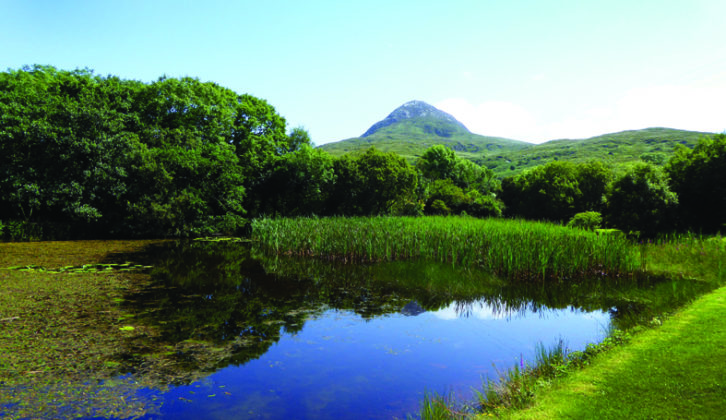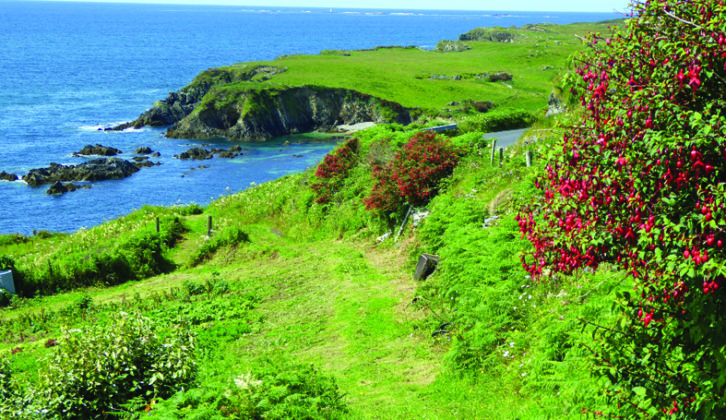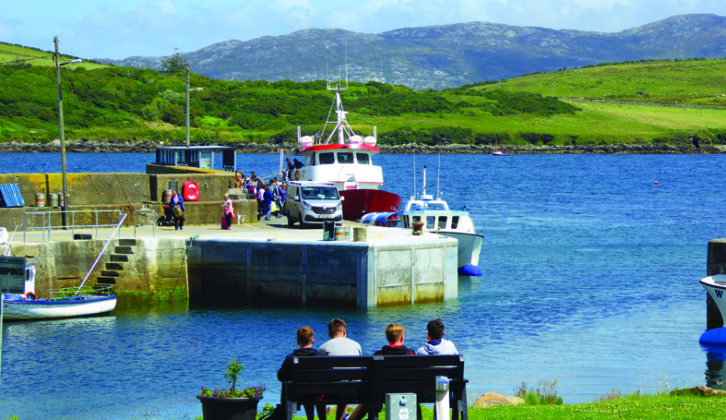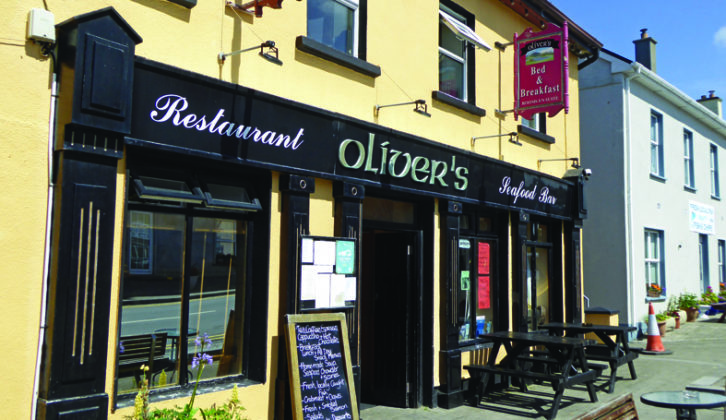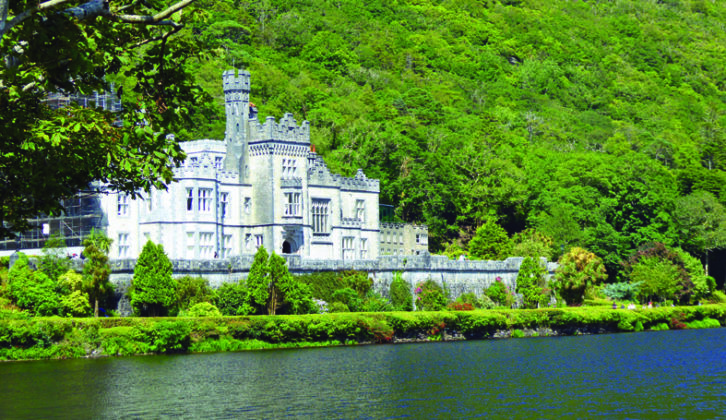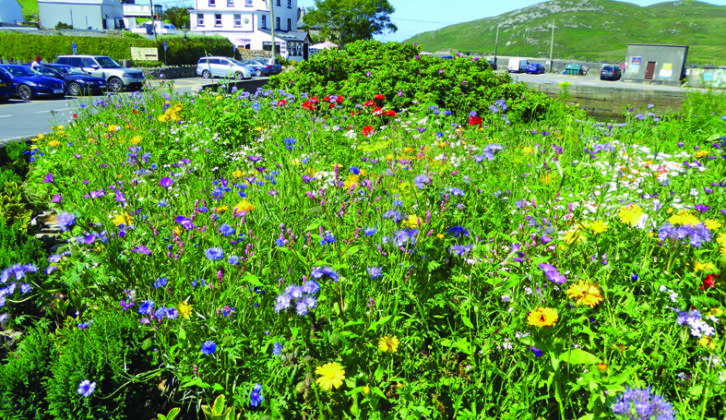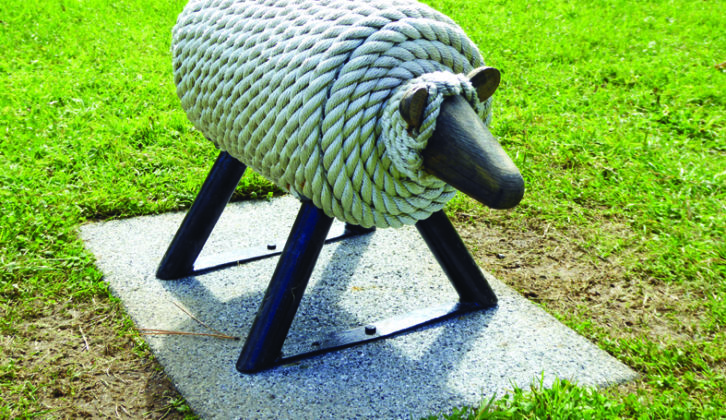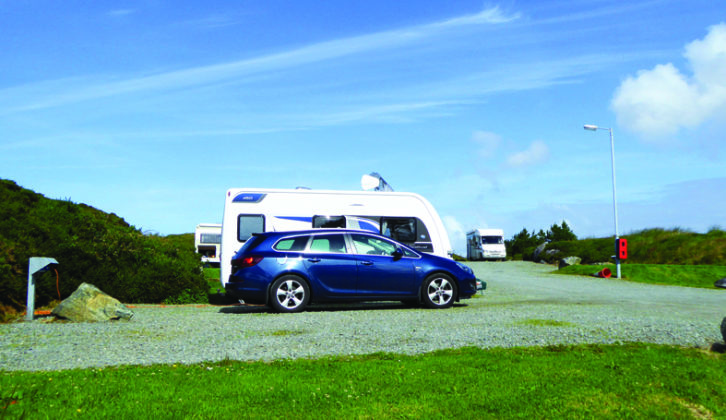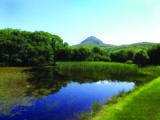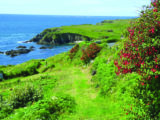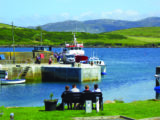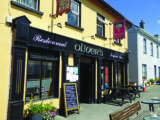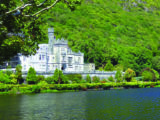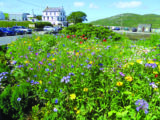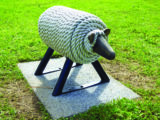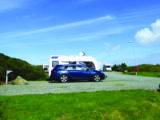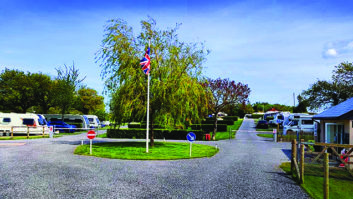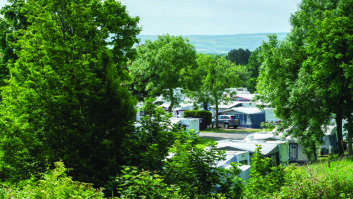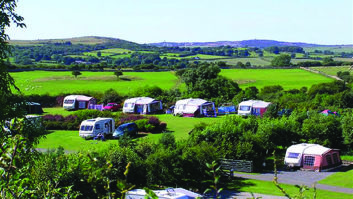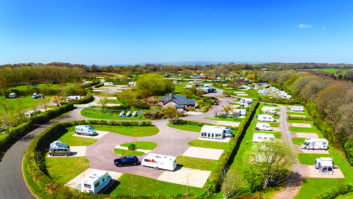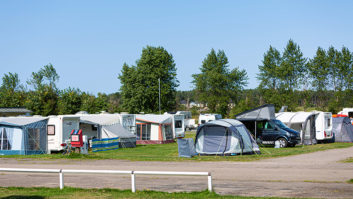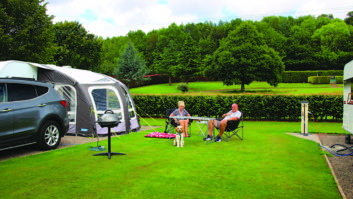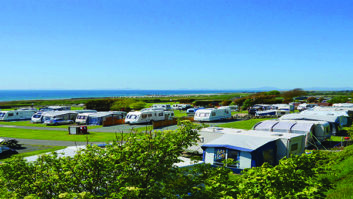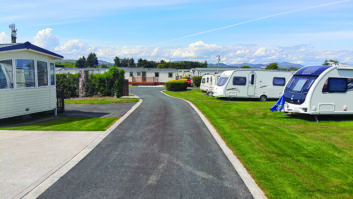The handsome town of Clifden, also widely known as the Capital of Connemara, nestling between the majestic Twelve Bens mountains and the wild Atlantic Ocean, is steeped in fascinating history and is a great introduction for a getaway to Connemara National Park.
Back in 1907, inventor Guglielmo Marconi sent the first transatlantic radio messages from his base near Clifden, to Nova Scotia, Canada, while in 1919, British aviators John Alcock and Arthur Brown made the first transatlantic flight, leaving Newfoundland and landing south of the town.
Both feats were achieved at Derrigimlagh blanket bog, now one of Europe’s most prized wetlands and a place of pilgrimage for visitors paying homage to the pioneers’ impressive achievements.
A signposted, looped 5km walk, with seven stopping points and interpretation panels, tells the fascinating story along the trail of former landmarks, such as Marconi’s Condenser House and the cairn marking the landing-place of Alcock and Brown.
A relaxing stroll
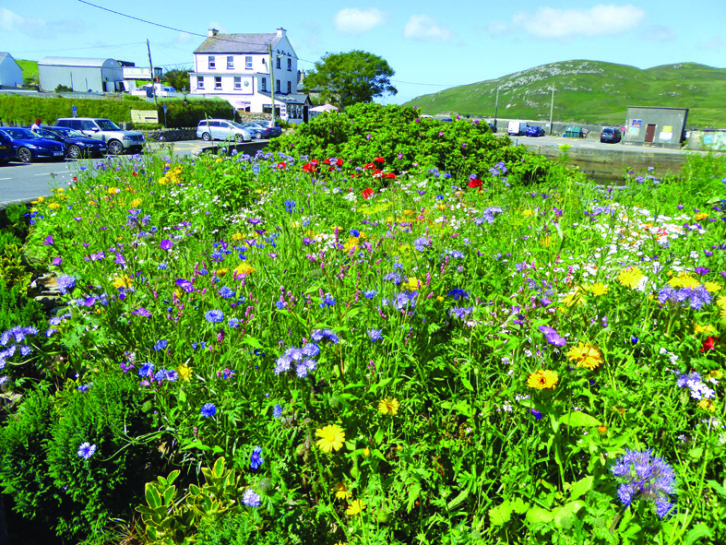
Clifden itself is a stylish and bustling town, developed in 1812 by local landowner John D’Arcy, allegedly to bring some law and order to anarchic Connemara.
Today its wide streets and attractive buildings host an excellent range of shops, pubs, cafés and restaurants, and it’s a very civilised place to take a relaxing stroll or enjoy a leisurely meal or drink.
We were staying a short drive away, at the beautifully kept Clifden Campsite and Caravan Park, Shanaheever, off the main N59. We paid several visits to the town for sightseeing and shopping.
The visitor information centre on Market Street is especially welcoming, with an array of leaflets, including a self-guided walking trail around the town, taking in 19th-century houses, historic bridges, the town hall and its two distinctive churches – the Roman Catholic St Joseph’s and the Church of Ireland Christ Church.
Another enjoyable route takes you down to Clifden Bay, where you can walk along a quiet road by the northern shore to Clifden Boat Club and the friendly Boardwalk Café and Bar. We lingered over a light lunch on the cafe’s outdoor terrace, savouring soup, sandwiches and sweeping sea views.
Cyclists are particularly well-served here, with routes ranging from the 16km-long Sky
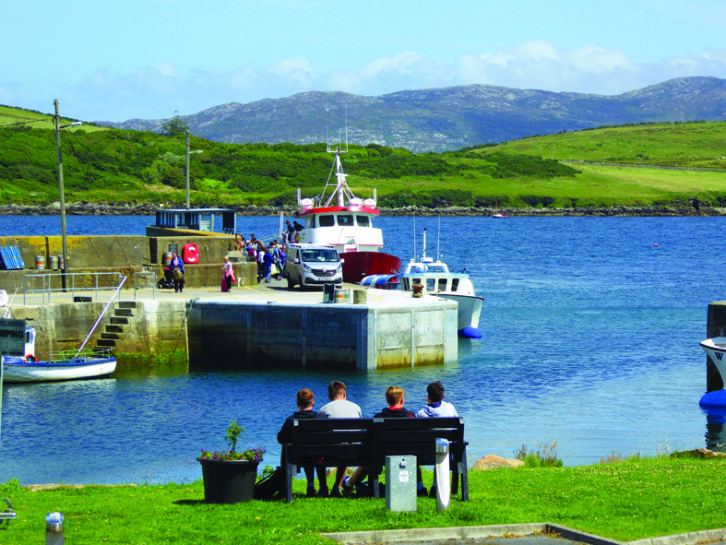
Road Loop to the 40km Roundstone Loop via Ballyconneely. We toured the Sky Road by car, sporting secluded sandy coves, shimmering blue seas and bright red and purple fuchsia bushes along the way.
Further north, we explored the equally stunning Cleggan Loop around the Aughrus Peninsula, pausing at the attractive fishing village of Cleggan en route.
Wine and dine
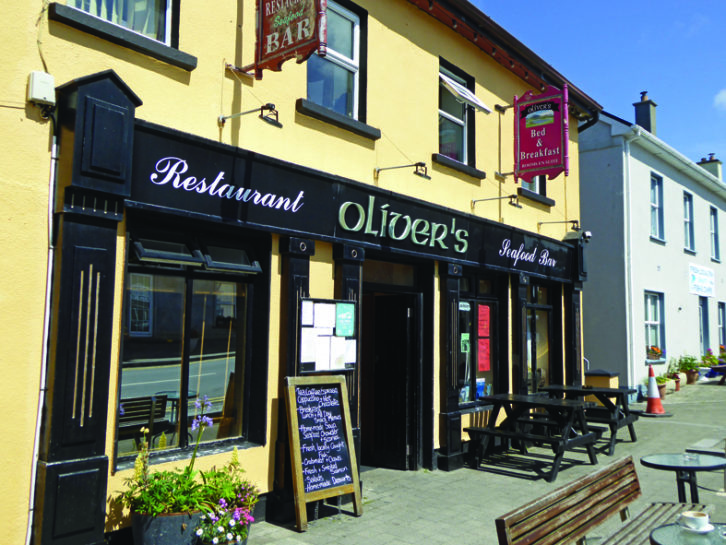
If you have a penchant for the freshest seafood, succulent locally raised meat, real ales and traditional music, don’t miss Oliver’s pub and restaurant. Situated on Cleggan Pier, it has a balcony overlooking the harbour, where you can watch ferries for the nearby island of Inishbofin leave and arrive, and see local fishing boats unloading their catch – all while you wine and dine.
When you finish the loop and reach the N59, take a left turn and the main road will take you through Moyard to Letterfrack, in a lovely location overlooking Ballynakill Harbour and the gateway to Connemara National Park.
This is where you can get up close, to fully appreciate the towering peaks of the Twelve Bens and learn some fascinating facts about the area’s natural history. One tip: do try to get there early in the day, as competition for spaces in the car park can be fierce, especially for spaces in the high season.
The visitor centre, with its exhibition and audiovisual show, is a good place to start to find out more about the area’s history, geology, flora and fauna.
Birds range from snipe to skylarks, and butterflies include the small heath, meadow brown and green hairstreak. The plant life is particularly rich, with several species of bog plants, sundew, sphagnum moss, bell heather and cross-leaved heath.
Clearly way marked walking routes are graded yellow (easy), blue (moderate) and red (more strenuous) to take you into the park itself. We opted for the blue route, allowing us to climb steadily and appreciate peaks such as Benbaun and Benbrack.
At the summit, we were rewarded with fabulous views back down to Letterfrack, over Ballynakill Harbour and Inishbofin.
We stopped for a picnic here, to savour the panorama in the warm summer sunshine.
Back near the visitor centre, we relaxed over a generous pot of tea in the courtyard while watching chaffinches busily feeding on discarded crumbs, then sought some welcome shade among the trees and waterfalls of the Ellis Wood Nature Trail.
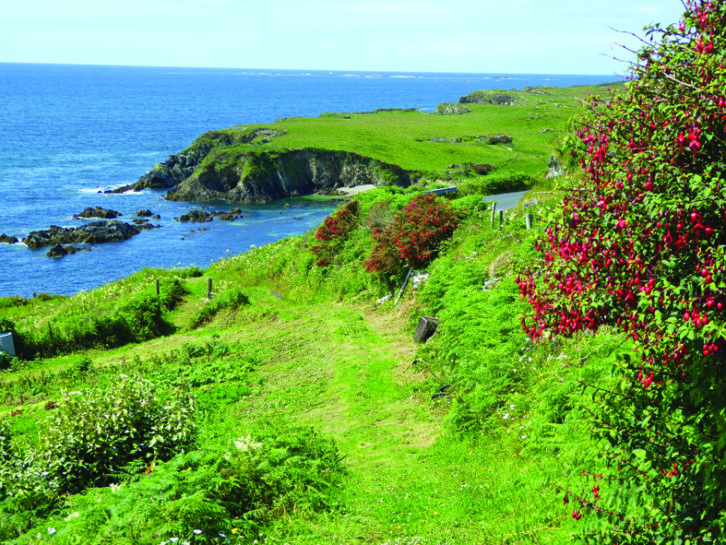
Letterfrack itself is home to an Avoca store, selling a selection of Irish crafts, gifts, clothing and textiles -well worth a browse if you’re looking for exquisite souvenirs.
If you love long walks on biscuit-coloured sands, looking out over crystal-clear seas ranging in shade from palest turquoise to deepest blue, Connemara is the perfect choice. Even in the high season (July), we met very few people during our oceanside strolls. Our favourites were Mannin Bay, south of Clifden, and Ballynakill Bay, with mountains as its breathtaking backdrop, plus views across to Inishbofin.
Another fascinating port of call, worthy of a whole day’s exploration, was Kylemore Abbey & Victorian Walled Garden, part of a 1000-acre estate in a stunning woodland, lakeland and mountain-ringed setting.
Again, it’s advisable to get there early in the day, because parking is much in demand during the high season.
Gothic architecture
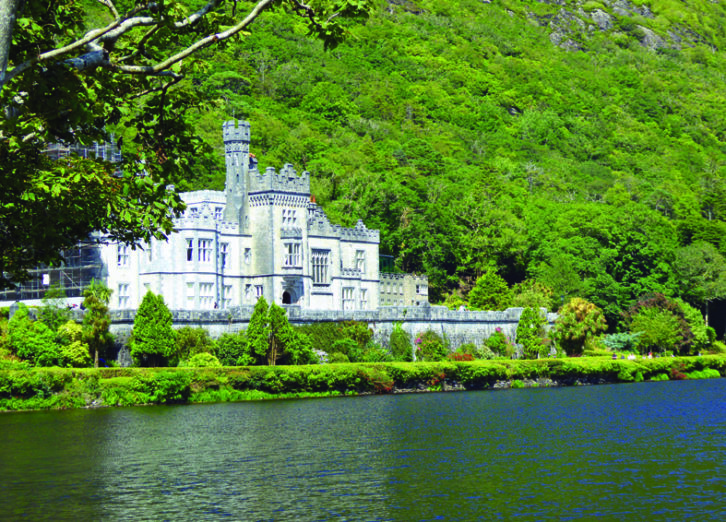
Built in the Victorian Gothic style in the 1860s, Kylemore Abbey was originally home to Mitchell Henry, a pathologist and eye surgeon, and later politician, and his family. When his beloved wide, Margaret, died at the age of 45 while they were on holiday in Egypt, Mitchell devoted himself to politics and helping the local community.
A founding member of the Home Rule movement, he made improvements for local people recovering from the great Famine, providing work, housing and a school.
In 1903, the house was sold to the Duke of Manchester, whose Duchess removed many of the original Italianate interiors, including large quantities of marble and a much-admired stained glass window. The couple left Kylemore in 1914, and in 1920 it became home to a community of Benedictine nuns, who live there to this day.
The Abbey is interesting, but on a sunny day the wider estate has more appeal. Walks range from a 20-minute nature and tree trail to a three-hour guided mountain hike.
The Head Gardener’s House, Bothy and Glass Houses have been beautifully preserved, and you can see bananas and grapes flourishing in sheltered conditions, just as they did in the 1890s.
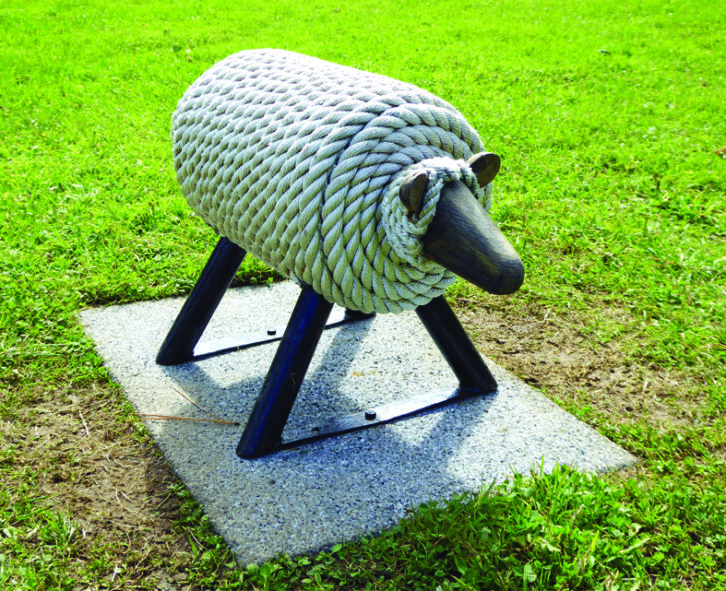
Other highlights are the Gothic Church, built by Mitchell in memory of Margaret, the Mausoleum where they both now rest, and the Sacred Heart Statue, erected in 1932, which can be viewed on a guided hike.
Eating and shopping are also a pleasure here, at Mitchell’s Café, the Craft & Design Shop & Pottery Studio, and the Garden Tea House, where we enjoyed afternoon tea and were charmed by the antics of the birdlife, as well as the ingenious rope and wooden ‘sheep’ created for younger visitors.
Connemara ponies
Back in Clifden, I was keen to see the native Connemara ponies, now popular all over the world, so once again, we sought the advice of the helpful staff at the visitor information centre.
They pointed us in the direction of the Errislannan Manor Riding Centre, to the south of the town, where we were given a warm welcome and invited to walk across the fields to see these imposing animals in their natural setting.
It is thought that Connemaras developed from Scandinavian stock brought to Ireland by the Vikings. Legend has it that galleons from the Spanish Armada ran aground here in 1588, and the Andalusian horses helped to refine the bloodline.
The Connemaras are especially prized for their versatility, stamina and good nature, and the Errislannan ponies lived up to that reputation, proving inquisitive and friendly. Every August, horse-lovers head for the Clifden Show, to admire the largest display of the ponies anywhere in the world.
Errislannan, on Lough Nakilla, is also home to a beautiful garden, open to the public in the Royal Horticultural Society of Ireland Gardens for Charity scheme.
On our final evening in Clifden, we decided to reflect on our experiences over dinner at the popular Marconi Restaurant, in Foyle’s Hotel. Here, fresh local produce – oak-smoked salmon, lamb, beef, sea bass and monkfish – is given a modern twist and served with a smile in a traditionally Irish setting. It made a suitably delicious end to a very pleasant holiday.
Trip planner
When to go
We visited in July, when the weather was agreeably warm and sunny. But Ireland is one of the wettest countries in Europe, so it’s advisable to take waterproofs and stout footwear at any time of year.
Way to go
We used the Irish Ferries Holyhead-Dublin crossing.
Where we stayed
Clifden Campsite and Caravan Park
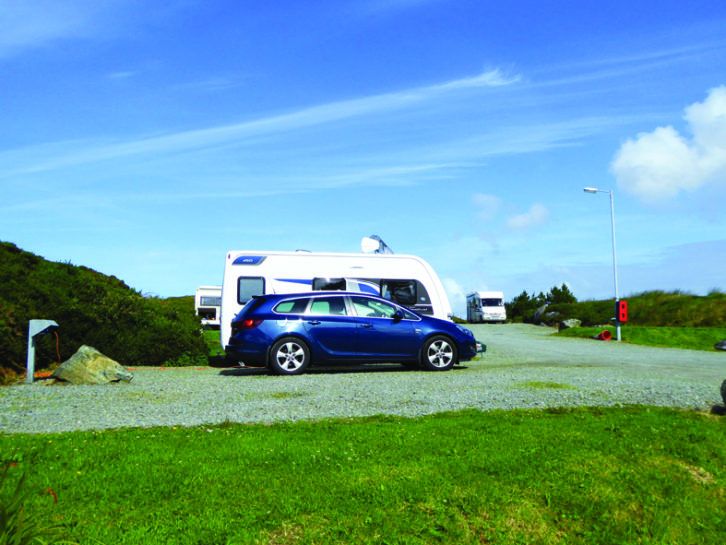
This peaceful, family-friendly campsite makes an ideal base for exploring Connemara’s beaches and countryside.
- Address Shanaheever, Westport Road, Clifden, Co Galway, H71 TP08
- Web clifdencamping.com
- Tel 00 353 (0)95 22150
- Open 1 March to 31 October
- Pitches 42 touring
- Charges (pitch+2+hook-up) €27-€31
Further information
- Ireland Tourism
- Discover Connemara
- Connemara National Park
- Kylemore Abbey & Victorian Walled Garden
- Errislannan Manor Riding Centre
Our outfit
Vauxhall Astra 2.0 Sports Tourer and Glossop Caravans 2017 Special Edition Coachman Festival 450
If you liked this… READ THESE:
Ireland: Practical Caravan Travel Guide
Anglesey: Insider’s Travel Guide
If you’ve enjoyed reading this article, why not get the latest news, reviews and features delivered direct to your door or inbox every month. Take advantage of our brilliant Practical Caravan magazine SUBSCRIBERS’ OFFER and SIGN UP TO OUR NEWSLETTER for regular weekly updates on all things caravan related.
If you love long walks on biscuit-coloured sands, looking over crystal seas ranging in shade from turquoise to blue, Connemara is the perfect choice
